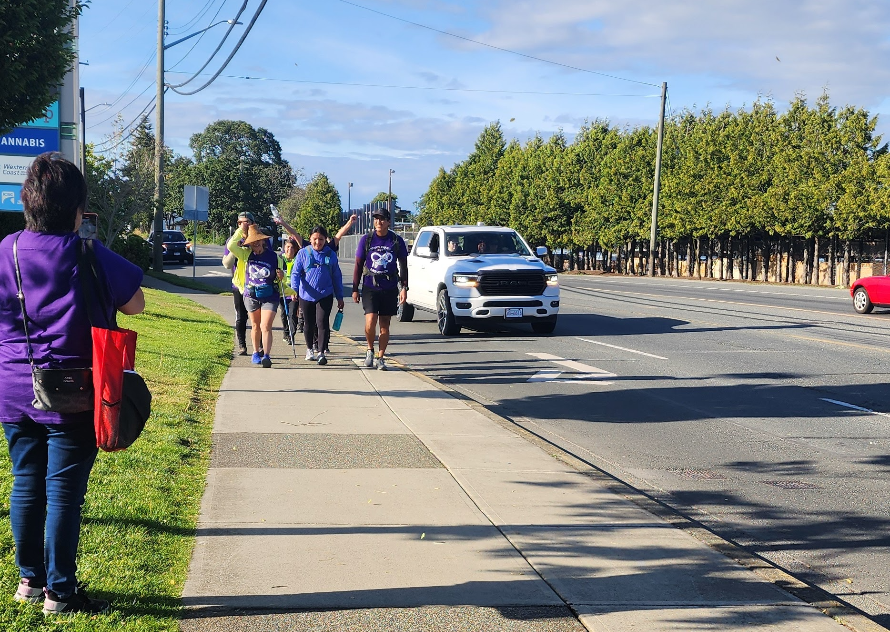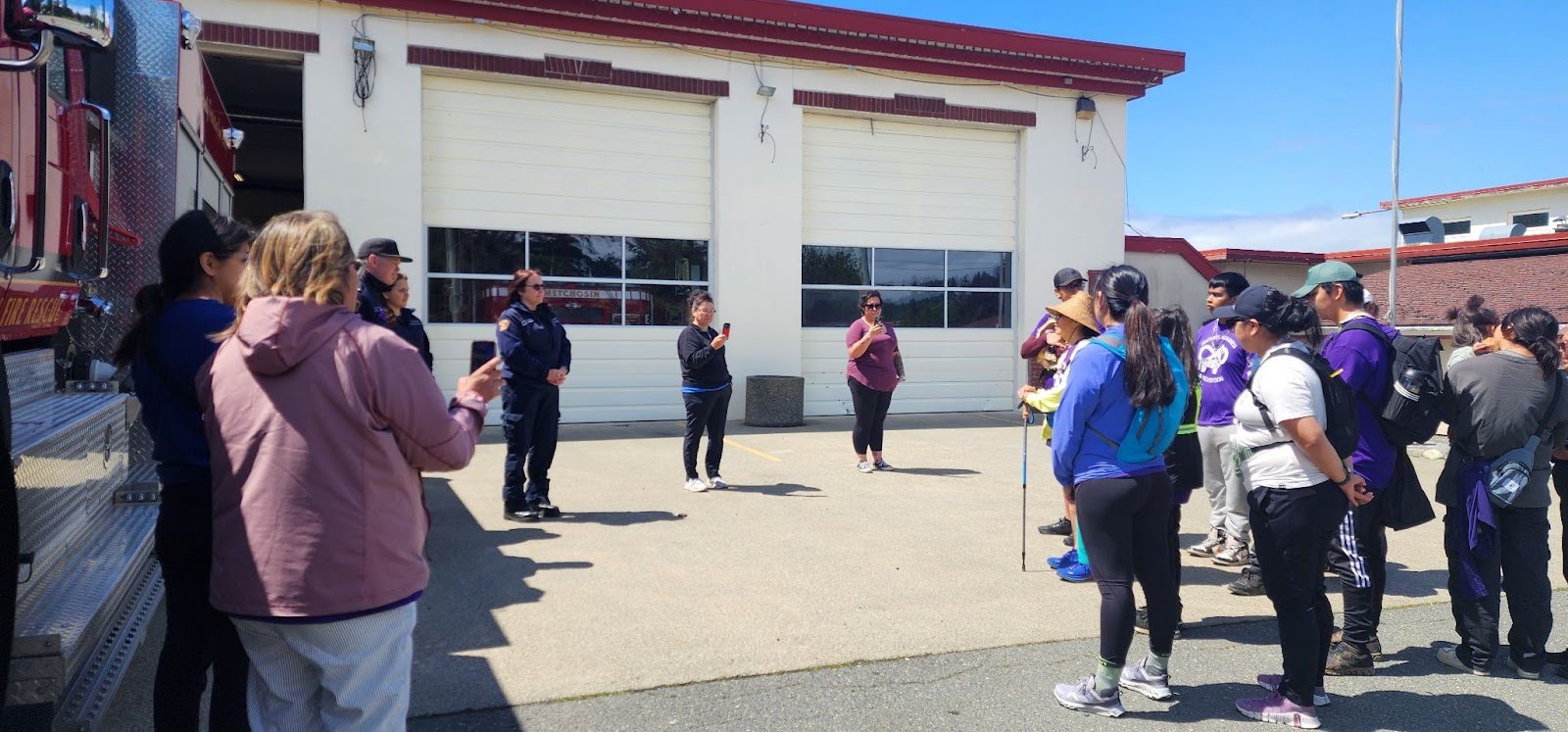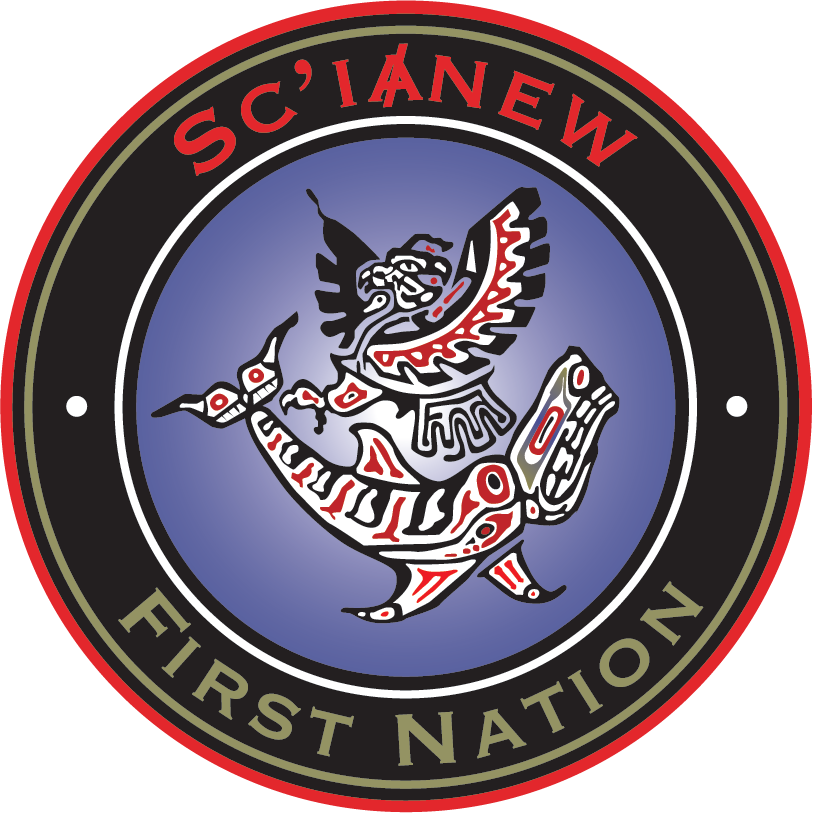Fentanyl poisoning among Indigenous community members in BC is an urgent issue. In fact, “between January and June 2021, 14% of overdose deaths were among” Indigenous community members, “despite them representing only 3.3% of the population,” and, in 2021, the “illicit drug-related death rate” was 4.8 times greater for Indigenous community members than it was for settlers that year. Dana Campbell wanted to do something to help the community heal, so – with the help of a few family members and the SC’IANEW First Nation – she staged a successful awareness walk to shine a light on this tragic issue, particularly the way it affects young community members.

The walk – which began in SC’IȺNEW First Nation and ended in Esquimalt Nation – covered an estimated 30 kilometers in one day. Campbell made stops along the way to share culture and stories with youths.
One stop – made at the suggestion of Jon Carr, District Principal of the Na’tsa’maht Indigenous Team with Sooke School District, was at Royal Bay Secondary School. There, Campbell led circle time with the students. Community members from Ahousat and Gold River were also present to connect with youth and express concerns around the negative effects of fentanyl use.
Campbell also stopped at the Metchosin Fire Hall, where she picked up a fire engine escort, complete with lights, sirens, and firefighters.

Campbell’s motivation for this walk stems from her experience recovering from a debilitating back injury. After an extensive recovery involving time stuck in bed and several months in a wheelchair, she finally regained the ability to walk. Now, Campbell sees walking as a way to celebrate life and second chances.
Campbell shared, “I started walking and thought, you know what? This is a great way to celebrate my life and my mobility.” Her ambition grew as she realized she had recovered to the point she could walk from one community to another, and she decided to use her newfound mobility to “talk about something that people don’t like to talk about: the fact that we are losing our younger people.” “There are young people dying of fentanyl poisoning,” says Campbell. “We’re losing the younger generation in our lives today.”

While the walk was solemn, honouring those lives affected by fentanyl poisoning and seeking to reduce future harm, Campbell found solace in the outpouring of community support. Campbell says, “I was in awe of all the support that we got. My sister coordinated everything. First Nations Health Authority gave us water bottles to share with students and purple pins that represent fentanyl overdose awareness. My mom created purple shirts to honour those walking.” “It was heavy,” says Campbell, “but it was a sense of relief. We were not alone.”
Campbell also received significant support from SC’IANEW Nation & Staff. She shared, “SC’IANEW First Nation has supported me 120%. It’s been amazing the support that I received from them.”
To stay up to date on this story and others, be sure to regularly check the SC’IȺNEW news page.

